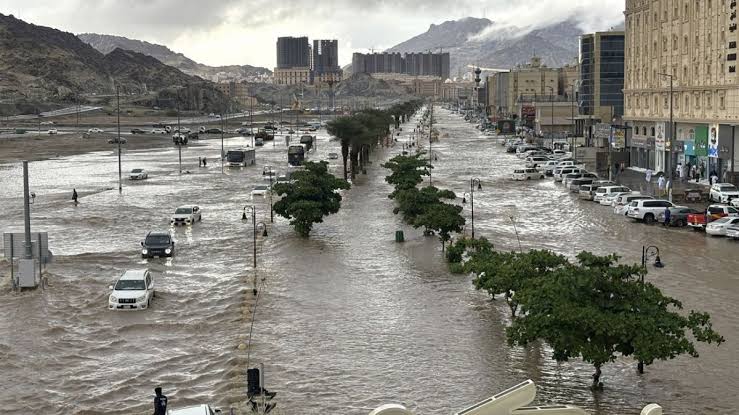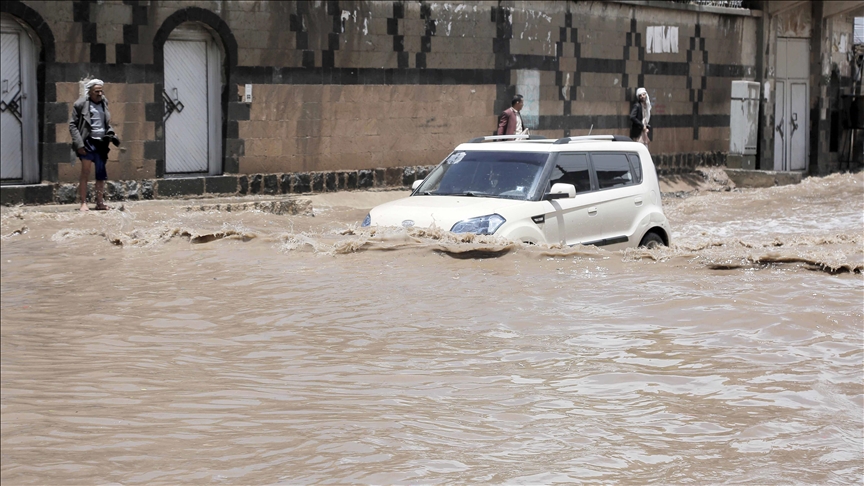Saudi Arabia’s Rain: Saudi Arabia, a country renowned for its vast deserts, scorching temperatures, and arid climate, is no stranger to the rarity of rain. When rain does grace the Kingdom, it is often celebrated as a blessing, bringing joy, life, and rejuvenation to the otherwise dry and barren landscape. Over recent years, rainfall in Saudi Arabia has gained more attention due to shifting weather patterns and its profound impact on the country’s ecosystem and infrastructure.
Saudi Arabia’s Rain : A Climatological Overview
Saudi Arabia falls under the arid desert climate category, characterized by extremely hot summers and mild winters. Rainfall is scarce, with the average annual precipitation ranging between 50mm to 150mm, depending on the region. Most of the rain occurs during the winter months, between November and February, and is often concentrated in short, intense bursts rather than prolonged showers.
The western and southwestern regions, particularly in areas near the Asir Mountains, receive relatively more rainfall compared to the central and eastern regions. The coastal cities along the Red Sea, such as Jeddah, experience occasional rainstorms, while Riyadh and other areas of the Najd plateau receive limited but significant rainfall during certain times of the year.


The Significance of Rain in Saudi Arabia
Rainfall holds immense cultural, environmental, and economic importance in Saudi Arabia. For centuries, it has been viewed as a divine blessing, deeply intertwined with the country’s Islamic traditions. Many residents offer prayers for rain, known as Salat Al-Istisqa, seeking God’s mercy to provide the much-needed resource.
In a land where water scarcity is a pressing challenge, rain replenishes groundwater reserves, nourishes vegetation, and provides relief to people and animals alike. For farmers, rain is crucial for cultivating crops and supporting livestock, particularly in the agricultural hubs of the southwestern regions.

Challenges of Sudden Rainfall
Despite its benefits, Saudi Arabia’s infrastructure and topography are not always equipped to handle the challenges posed by sudden and heavy rain. Flash floods are a frequent consequence, particularly in urban areas like Jeddah, Riyadh, and Mecca. The lack of adequate drainage systems often leads to waterlogging, disrupting daily life and causing significant damage to property.
Jeddah, in particular, has faced several devastating flash floods over the past decade. The 2009 and 2011 floods caused widespread destruction and highlighted the need for improved urban planning and drainage infrastructure. Authorities have since taken steps to mitigate the risks, but heavy rainfall continues to pose challenges in certain areas.
Recent Rainfall Patterns and Their Implications
In recent years, Saudi Arabia has experienced an increase in unusual weather patterns, including heavier-than-usual rainfall. Experts attribute these changes to global climate change, which has disrupted traditional weather systems worldwide.
Some notable instances of rainfall in Saudi Arabia include:
- November 2022: Torrential rains in Jeddah caused severe flooding, leading to road closures, school shutdowns, and delays at King Abdulaziz International Airport.
- March 2023: Heavy rains across Riyadh and Qassim brought life to the desert landscape, transforming the dunes into a carpet of green for a brief period.
- January 2025: Rainfall in the Tabuk region blanketed the area with rare snowfall, attracting tourists and locals eager to experience the unusual sight.
Such events underline the urgent need for adaptive measures to cope with evolving weather conditions.
The Beauty of Rain in the Desert
When rain graces Saudi Arabia, it creates breathtaking sights that are cherished by residents and visitors alike. The dry, golden sands of the desert come alive with a burst of greenery, as dormant seeds sprout and bloom within days. Wadis (dry riverbeds) flow with water, and small ponds form, attracting wildlife and migratory birds.
For photographers and nature enthusiasts, the fleeting beauty of rain-drenched landscapes offers a rare opportunity to capture Saudi Arabia’s desert in an entirely new light.
Government Initiatives and Water Management
Given the rarity of natural rainfall, Saudi Arabia has made substantial investments in water management and conservation. Initiatives include:
- Rainwater Harvesting: Collecting and storing rainwater to recharge aquifers and support agricultural activities.
- Drainage Infrastructure: Developing better urban drainage systems to prevent flooding and waterlogging in cities.
- Cloud Seeding Programs: Exploring techniques to artificially enhance rainfall, especially in arid regions.
- Desalination Plants: The Kingdom relies heavily on desalination for its freshwater needs, producing significant volumes of water to supplement its limited natural resources.
These measures, combined with public awareness campaigns about water conservation, aim to ensure sustainable management of the country’s precious water resources.
Cultural Celebrations of Rain
Rain in Saudi Arabia is not only a practical resource but also a cause for celebration. Families often gather to enjoy the cool weather, with children playing outdoors and adults savoring traditional dishes prepared specifically for rainy days. In rural areas, rain transforms the social atmosphere, with farmers rejoicing in the prospect of better yields and livestock thriving on freshly sprouted vegetation.
Camping trips, or “kashta,” become especially popular during and after rainfall, as people venture into the desert to enjoy the rare greenery and cooler temperatures.
Tourism Opportunities
Unusual weather events, such as rain and snowfall in the Tabuk and Asir regions, have also boosted tourism in Saudi Arabia. Visitors flock to these areas to experience the striking transformation of the desert and enjoy outdoor activities like hiking, photography, and picnicking. The government’s Vision 2030 initiative, aimed at diversifying the economy and promoting tourism, has highlighted these unique natural phenomena as key attractions.
Conclusion
Rain in Saudi Arabia is a rare and cherished phenomenon that brings with it both blessings and challenges. From replenishing vital water sources to creating moments of communal joy, rainfall holds a special place in the hearts of the Kingdom’s residents. However, the challenges posed by flash floods and shifting weather patterns highlight the need for continued investment in infrastructure and sustainable water management.
As Saudi Arabia embraces the changes brought by climate variability, its ability to adapt and innovate will ensure that the fleeting beauty of rain continues to bring life and joy to this arid land.
Do follow Uae stories for more Updates














